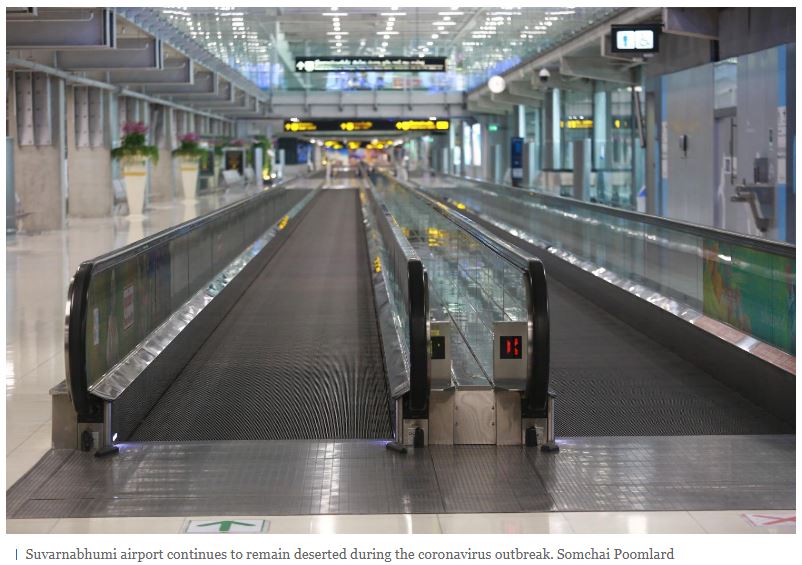Thailand: Closed borders pose tourism risk
If the country does not let foreign tourists in by the end of the year, some 60% of hospitality enterprises are at risk of going out of business, according to the Tourism and Sports Ministry.
“People will be safe from the virus as borders remain closed, but wounds from the economic fallout might be deeper and the government will face more difficulty in helping workers who lost their jobs,” said Phiphat Ratchakitprakarn, the tourism and sports minister.
The Tourism Authority of Thailand predicted international arrivals will nosedive by 80% to 8.2 million, generating only 396 billion baht this year.
He said the tourism industry will contribute only 6-7% of GDP this year, compared with 18% in 2019.
“If the travel bubble scheme can take shape during September until December, tourism is expected to generate 200 billion baht, which can support our tourism goal of 1.23 trillion earned this year,” said Mr Phiphat.
Domestic tourism may generate 700 billion baht this year with the support of government stimulus packages scheduled to kick off tomorrow.
“In my opinion, we have to open some parts of the country to mitigate the impact from the virus and revive the economy,” he said.
The ministry plans to introduce the first phase of designated areas for tourists to spend at least 14 days in a travel bubble on islands: Phuket, Koh Phi Phi, Koh Samui, Koh Phangan, Koh Tao and Koh Nang Yuan. Tourists going to those areas can travel freely between those islands.
He said Phuket has the potential to carry out 1,000 swab tests per day, but the Public Health Ministry can ask for more health personnel from other provinces to help with the lab tests.
If 200,000 foreign tourists spend 5,000 baht per person per day in Phuket during the last four months, it could generate at least 14 billion baht for the local economy, said Mr Phiphat.
The American Chamber of Commerce in Thailand has discussed with the Tourism and Sports Ministry its readiness to bring tourists to Thailand once the travel restrictions are lifted.
Mr Phiphat said eight provinces have confirmed with the ministry their readiness to reopen for international leisure tourists, including Bangkok, Chon Buri, Chiang Mai, Chiang Rai and Songkhla.
He said Koh Chang in Trat and Koh Samet in Rayong might be included in the next phase.
The ministry also plans to propose a travel scheme between Hat Yai and three states in Malaysia that have had no new local cases for more than 70 days: Penang, Perlis and Kedah.
“We received an inquiry from Penang state, asking why they’re not included in the travel bubbles negotiation despite being safe from the virus,” said Mr Phiphat.
Tourists travelling via the travel bubbles scheme must arrive by air, but those from low-risk states in Malaysia might be allowed to travel by land via Songkhla and Satun.
For domestic market stimulus, the ministry expects only half of the 18-billion-baht budget for the “Let’s Travel” scheme will be used. There should be another phase of the measure from the remaining budget, he said, however, expats might not be included as Thais are the main focus.
Source: https://www.bangkokpost.com/business/1950884/closed-borders-pose-tourism-risk


 English
English




